Hypothermic treatment after computer-controlled compression in minipig: A preliminary report on the effect of epidural vs. direct spinal cord cooling
- PMID: 30542449
- PMCID: PMC6257352
- DOI: 10.3892/etm.2018.6831
Hypothermic treatment after computer-controlled compression in minipig: A preliminary report on the effect of epidural vs. direct spinal cord cooling
Abstract
The aim of the present study was to investigate the therapeutic efficacy of local hypothermia (beginning 30 min post-injury persisting for 5 h) on tissue preservation along the rostro-caudal axis of the spinal cord (3 cm cranially and caudally from the lesion site), and the prevention of injury-induced functional loss in a newly developed computer-controlled compression model in minipig (force of impact 18N at L3 level), which mimics severe spinal cord injury (SCI). Minipigs underwent SCI with two post-injury modifications (durotomy vs. intact dura mater) followed by hypothermia through a perfusion chamber with cold (epidural t≈15°C) saline, DMEM/F12 or enriched DMEM/F12 (SCI/durotomy group) and with room temperature (t≈24°C) saline (SCI-only group). Minipigs treated with post-SCI durotomy demonstrated slower development of spontaneous neurological improvement at the early postinjury time points, although the outcome at 9 weeks of survival did not differ significantly between the two SCI groups. Hypothermia with saline (t≈15°C) applied after SCI-durotomy improved white matter integrity in the dorsal and lateral columns in almost all rostro-caudal segments, whereas treatment with medium/enriched medium affected white matter integrity only in the rostral segments. Furthermore, regeneration of neurofilaments in the spinal cord after SCI-durotomy and hypothermic treatments indicated an important role of local saline hypothermia in the functional outcome. Although saline hypothermia (24°C) in the SCI-only group exhibited a profound histological outcome (regarding the gray and white matter integrity and the number of motoneurons) and neurofilament protection in general, none of the tested treatments resulted in significant improvement of neurological status. The findings suggest that clinically-proven medical treatments for SCI combined with early 5 h-long saline hypothermia treatment without opening the dural sac could be more beneficial for tissue preservation and neurological outcome compared with hypothermia applied after durotomy.
Keywords: durotomy; local hypothermia; motoneurons; neurofilaments; spinal cord; white matter integrity.
Figures
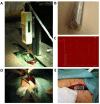



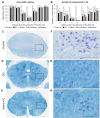
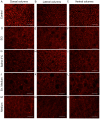
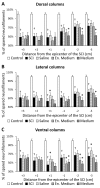


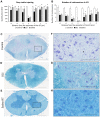

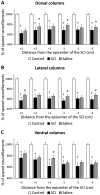


Similar articles
-
Neuroprotective effect of local hypothermia in a computer-controlled compression model in minipig: Correlation of tissue sparing along the rostro-caudal axis with neurological outcome.Exp Ther Med. 2018 Jan;15(1):254-270. doi: 10.3892/etm.2017.5432. Epub 2017 Nov 1. Exp Ther Med. 2018. PMID: 29399061 Free PMC article.
-
Effects of early surgical decompression on functional and histological outcomes after severe experimental thoracic spinal cord injury.J Neurosurg Spine. 2017 Jan;26(1):62-75. doi: 10.3171/2016.6.SPINE16343. Epub 2016 Sep 16. J Neurosurg Spine. 2017. PMID: 27636866
-
Effects of epidural hypothermic saline infusion on locomotor outcome and tissue preservation after moderate thoracic spinal cord contusion in rats.J Neurosurg Spine. 2005 Mar;2(3):308-18. doi: 10.3171/spi.2005.2.3.0308. J Neurosurg Spine. 2005. PMID: 15796356
-
The role of therapeutic hypothermia in the management of acute spinal cord injury.Clin Neurol Neurosurg. 2017 Mar;154:79-88. doi: 10.1016/j.clineuro.2017.01.002. Epub 2017 Jan 17. Clin Neurol Neurosurg. 2017. PMID: 28131967 Review.
-
Hypothermia for acute spinal cord injury--a review.World Neurosurg. 2014 Jul-Aug;82(1-2):207-14. doi: 10.1016/j.wneu.2013.01.008. Epub 2013 Jan 5. World Neurosurg. 2014. PMID: 23298671 Review.
Cited by
-
Porcine Model of Spinal Cord Injury: A Systematic Review.Neurotrauma Rep. 2022 Sep 1;3(1):352-368. doi: 10.1089/neur.2022.0038. eCollection 2022. Neurotrauma Rep. 2022. PMID: 36204385 Free PMC article.
-
Ferroptosis and mitochondrial dysfunction in acute central nervous system injury.Front Cell Neurosci. 2023 Aug 9;17:1228968. doi: 10.3389/fncel.2023.1228968. eCollection 2023. Front Cell Neurosci. 2023. PMID: 37622048 Free PMC article. Review.
-
Autonomic Dysreflexia following Spinal Cord Injury.Asian J Neurosurg. 2022 Aug 25;17(2):165-172. doi: 10.1055/s-0042-1751080. eCollection 2022 Jun. Asian J Neurosurg. 2022. PMID: 36120615 Free PMC article. Review.
References
-
- Balentine JD. Pathology of experimental spinal cord trauma. I. The necrotic lesion as a function of vascular injury. Lab Invest. 1978;39:236–253. - PubMed
LinkOut - more resources
Full Text Sources
Miscellaneous
